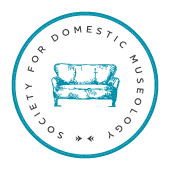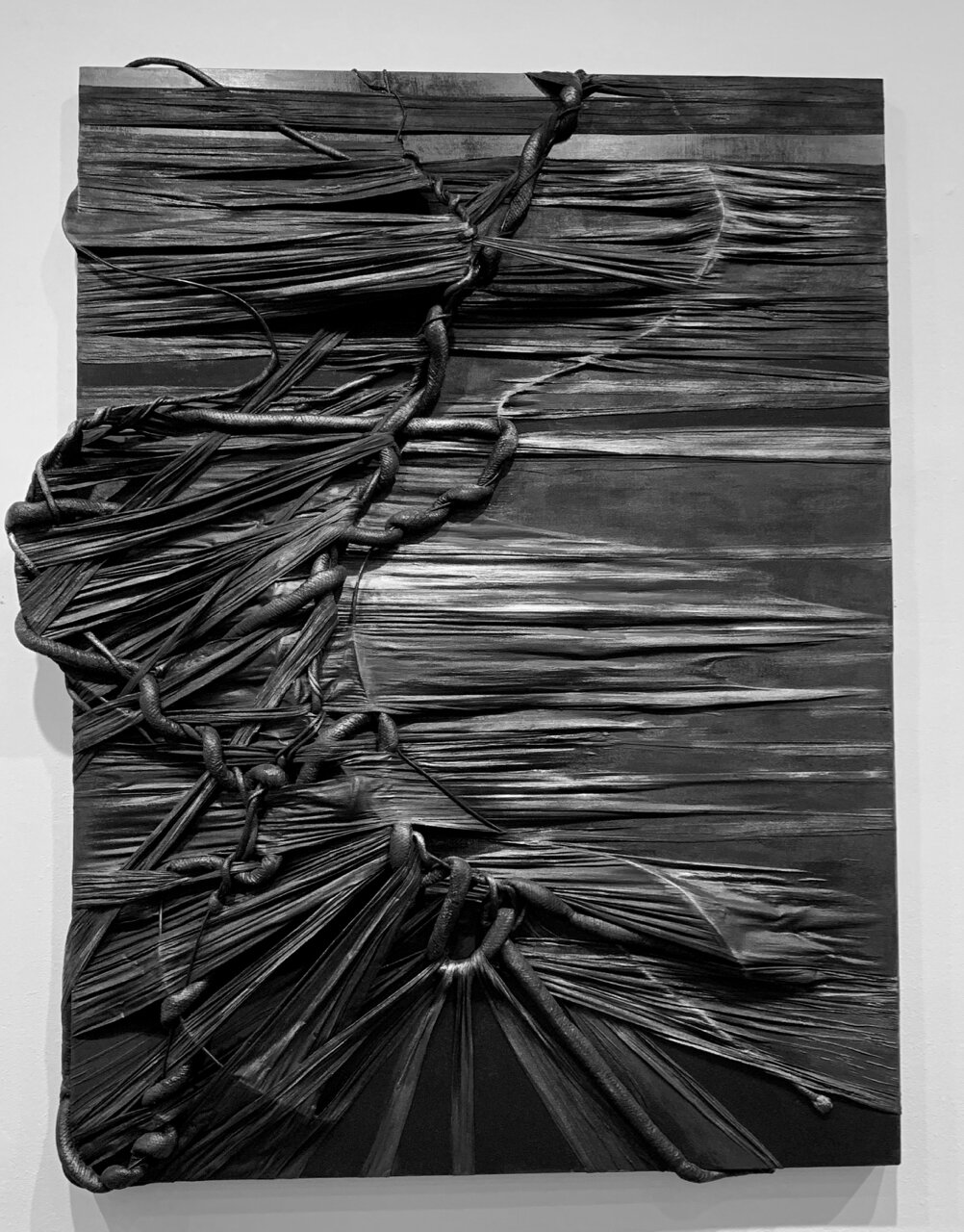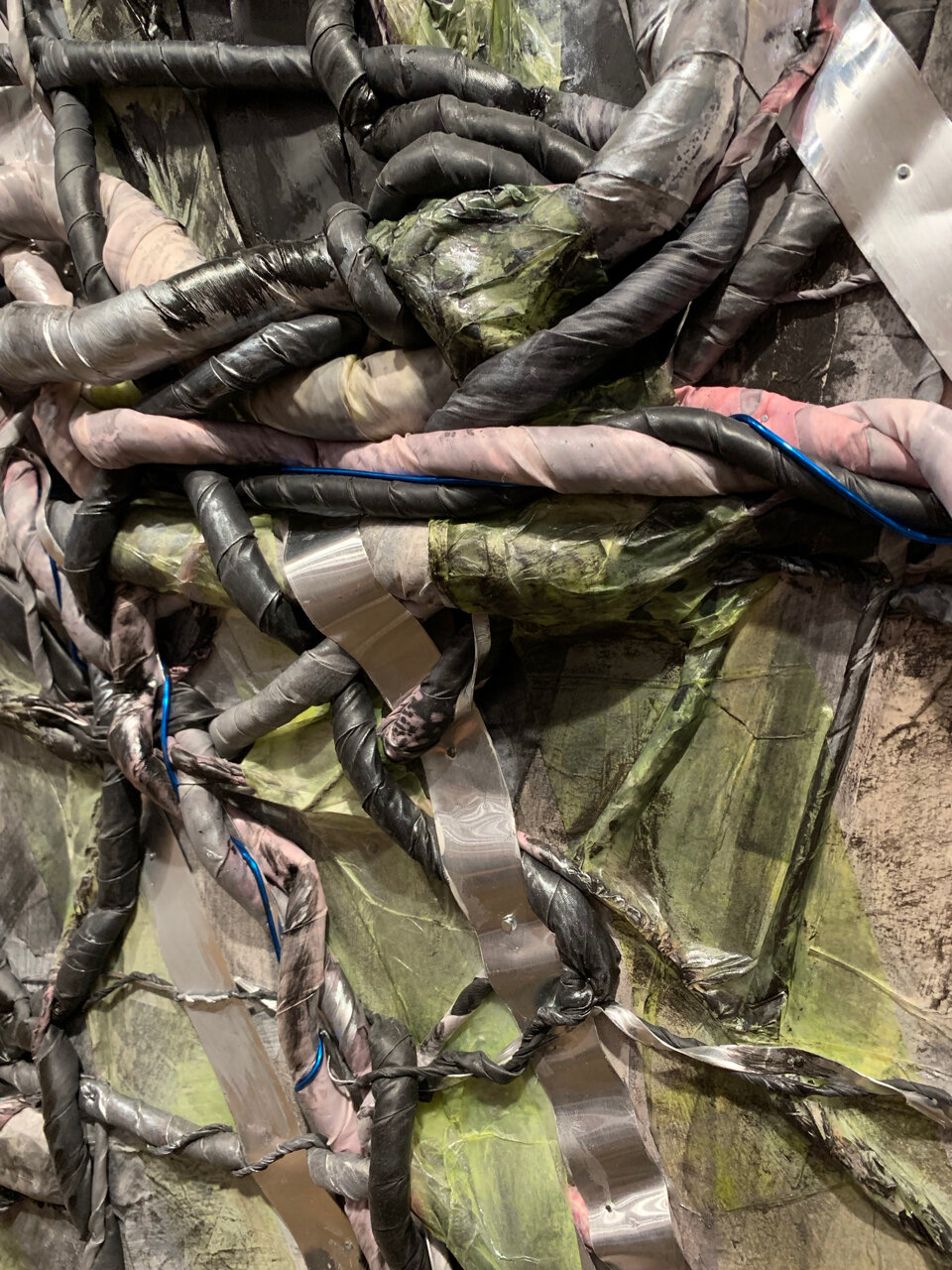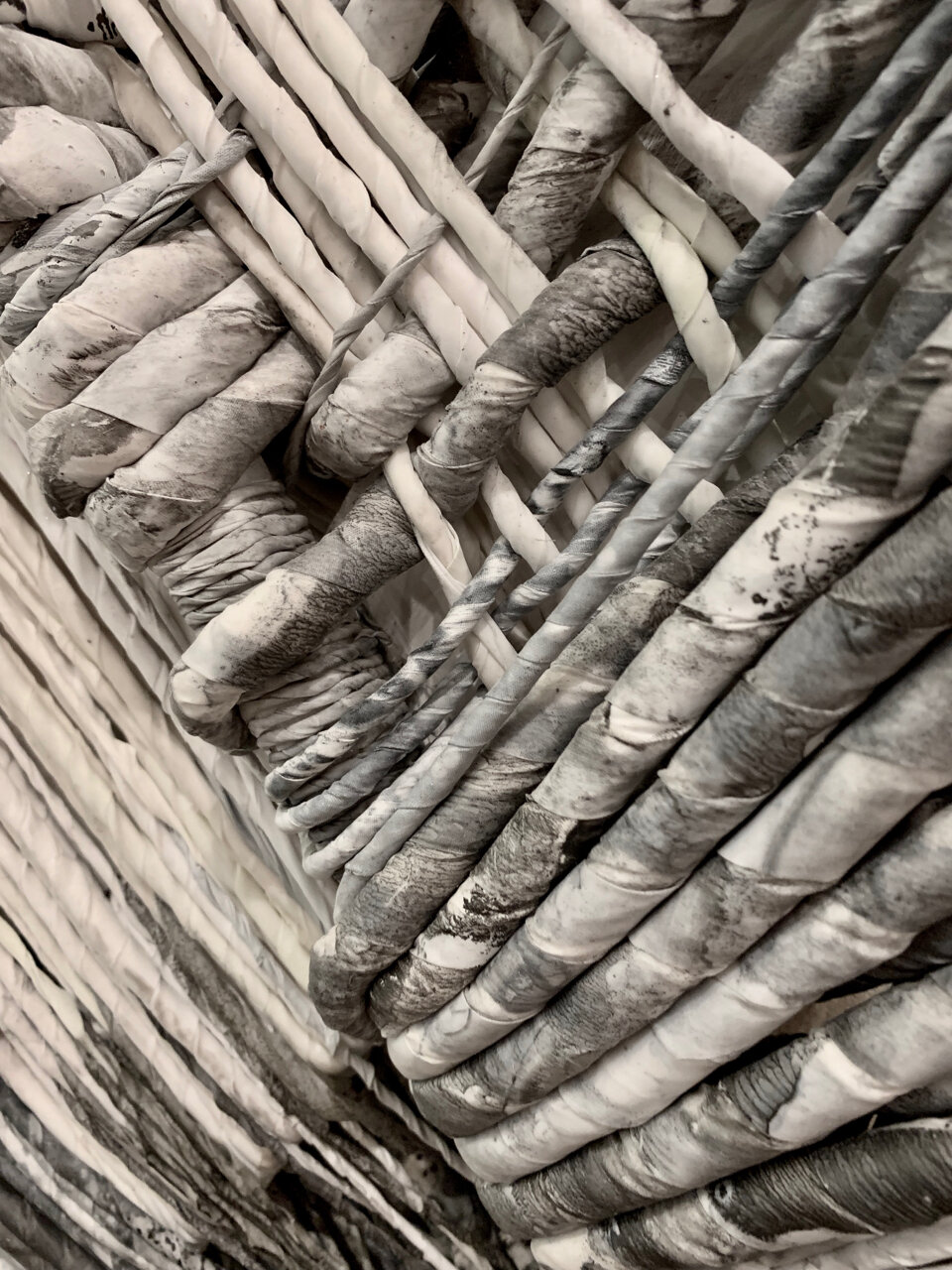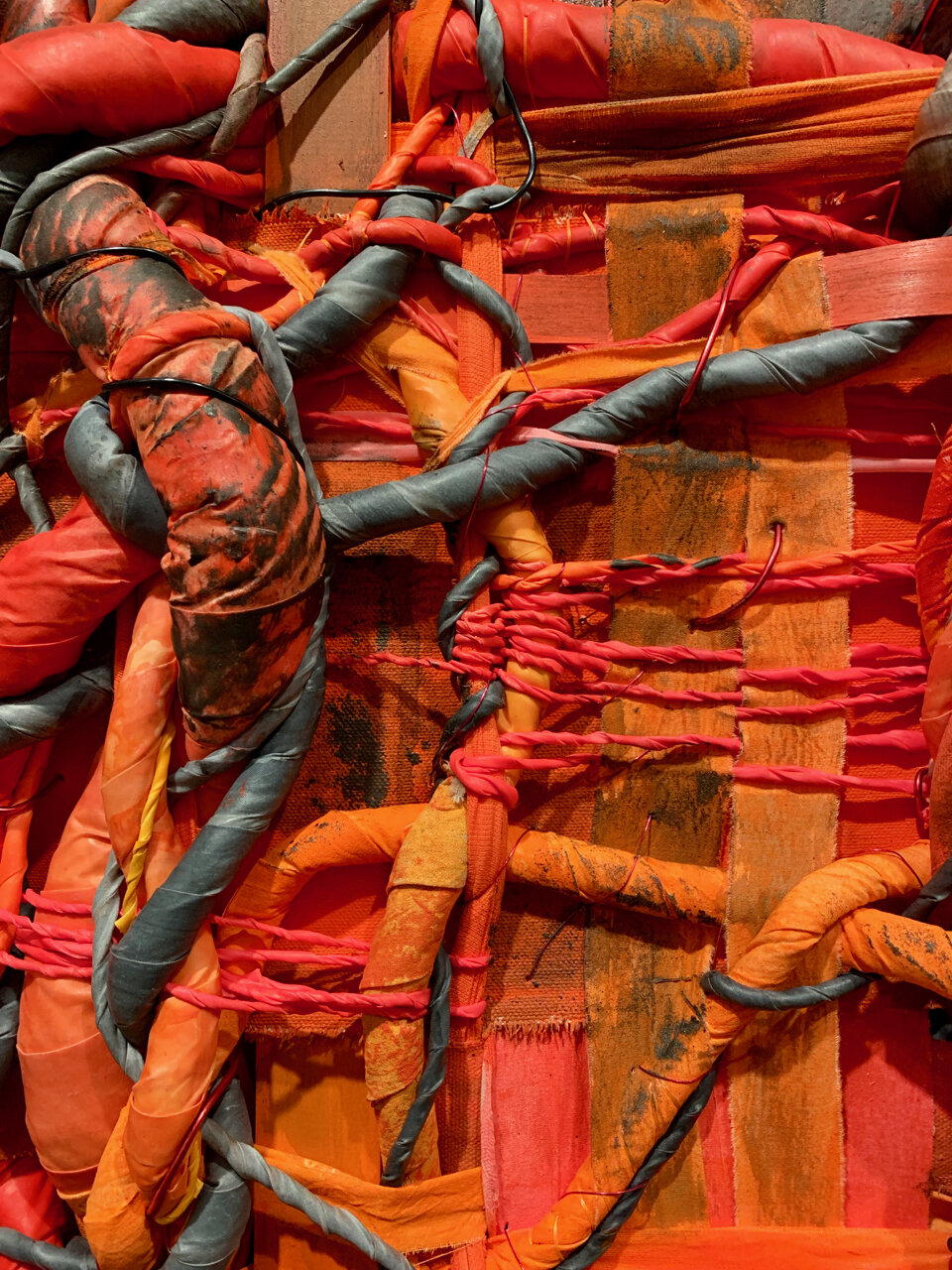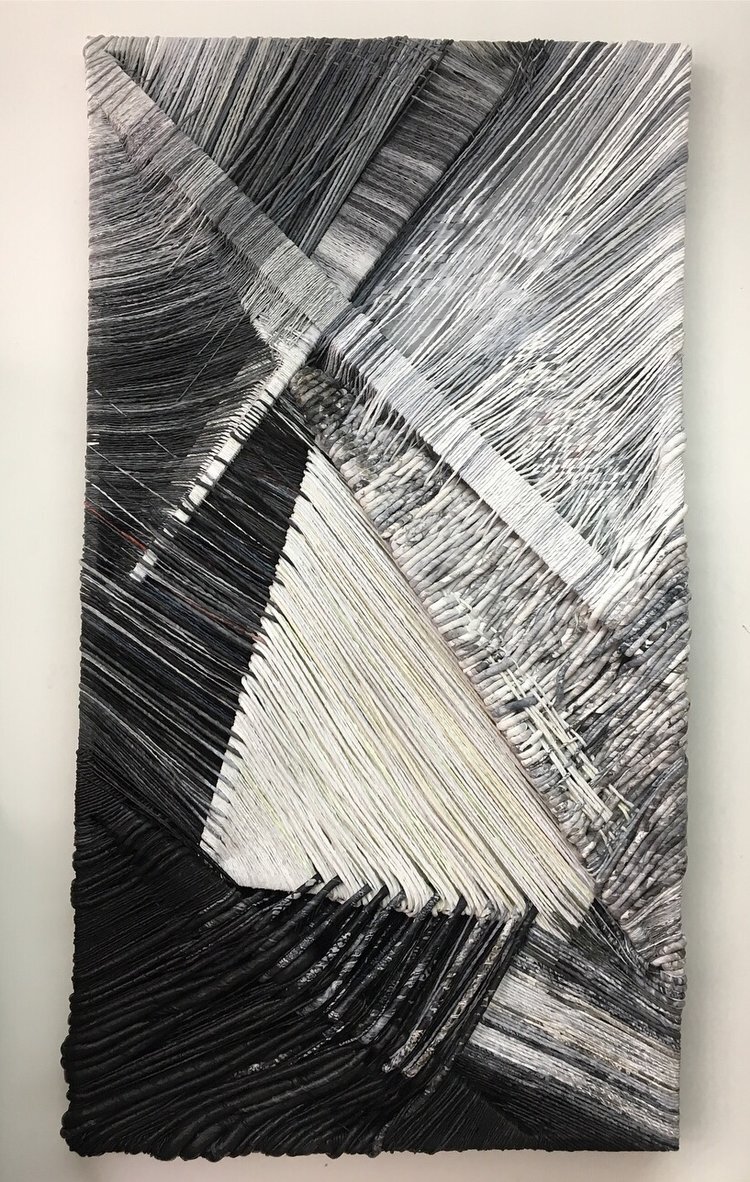On Saturday, February 1st, the Society for Domestic Museology visited the recently renovated Louise Nevelson Chapel at St. Peter’s Church on 54th and Lexington for a walk-through of the current exhibition, Meditative Motions, by Chellis Baird.
We started our visit by gathering in the chapel to learn a little more about Nevelson’s biography and career. Born in Ukraine in 1899, her family emigrated to the United States in 1906 and settled in Maine, where her father worked as a woodcutter and also owned a junkyard. When she was 21, she married Charles Nevelson and moved to New York City. While the marriage didn’t last long, her relationship to New York endured. She enrolled at the Art Student’s League and traveled to Europe in the early 1930’s to study painting with Hans Hoffman. When she returned to New York, she worked as an assistant to Diego Rivera on his Rockefeller Center Mural, Man at the Crossroads, which was later destroyed (a replica is now on view at the Whitney Museum for the exhibition, Vida Americana, which opened on February 17th).
Nevelson’s signature style of using found objects and a monochrome palette emerged in the 1940’s and 50’s, but it wasn’t until the 1960’s (when she herself was in her sixties) that she began to receive recognition for her work. In 1959, her installation Dawn’s Wedding Feast, was included in the MoMA exhibition, 16 Americans, where she was the only woman artist included in the show.
In 1975, Nevelson was commissioned to design The Chapel of the Good Shephard at St. Peter’s Church. In a departure from her practice of using found objects, the sculptural wooden elements in the chapel were all deliberately designed and constructed by Nevelson for the space. As a Jewish artist creating a chapel in a Christian Church, she said this about the work:
“Abstraction allows me to transcend Christian imagery to the essential point where all religions meet. Each element forms a whole in itself a deliberate expression of joy, of human warmth. For me, for my work, this chapel is a statement of purity and truth”
St. Peter’s Church has a long tradition of supporting the arts and Elaine de Kooning was their first curator over fifty years ago. Their thriving curatorial program invites contemporary artists to exhibit in their two galleries: one in the Narthex and the other in the social hall. Chellis Baird’s solo exhibition, Meditative Motions, opened in November 2019 in both galleries. Using the chapel as a source of inspiration, Baird created a series of eight sculptural paintings in white that hang in the narthex along with a number of other large-scale works that welcome you into the the space.
The labor-intensive process that Baird uses to create her paintings is inspired both by the world of textiles and the movement of dance. Trained as a painter, she started to to experiment with the core elements of painting: the wooden stretcher, the canvas, and paint, to work in a more sculptural way. She starts by dying the fabric elements individually, Some are so compelling on their own that they make there way into some of her 2-D collage work, but most are wrapped into cords that are then woven onto the frame. Working this way adds elements of movement and tension to each piece that reference the stretching and movement of a dancer’s body.
During our visit, Chellis walked us through her exhibition, talking about how she developed her process and how participating in this exhibition program has impacted her work. Photographer, Anna Usacheva, documented our event and created this lovely video of Chellis in her own words:
Now that I know about the Nevelson Chapel, I am certain I will be back. And while I am eager to see what is next in St. Peter’s curatorial program, it is hard to imagine the space without Chellis’s powerful works welcoming you in.
